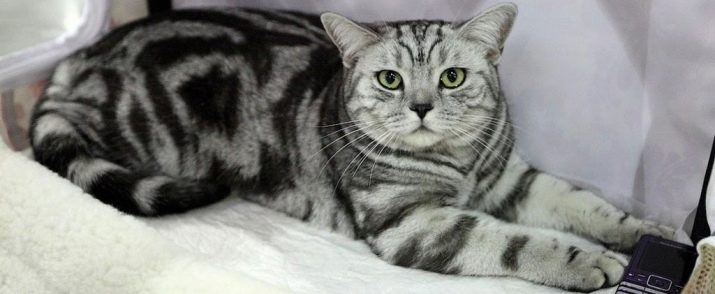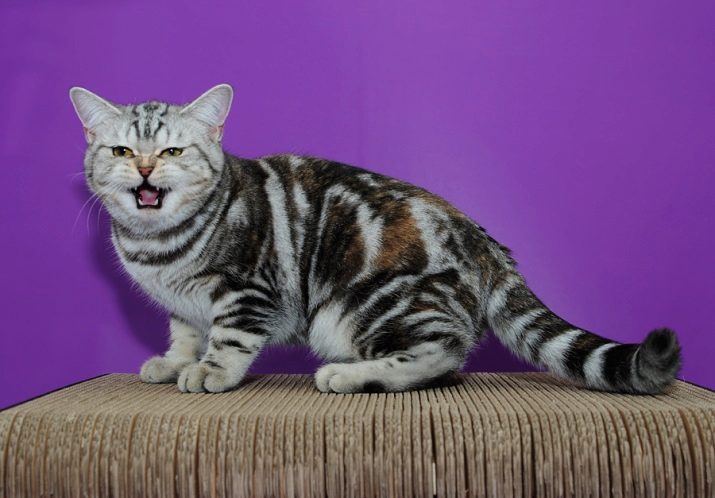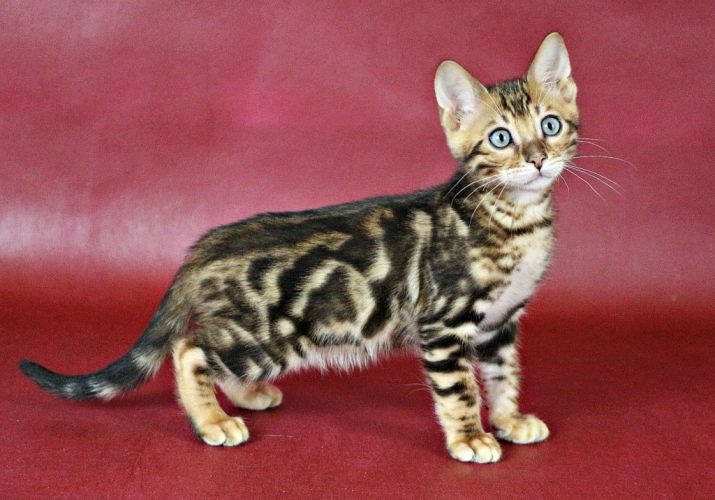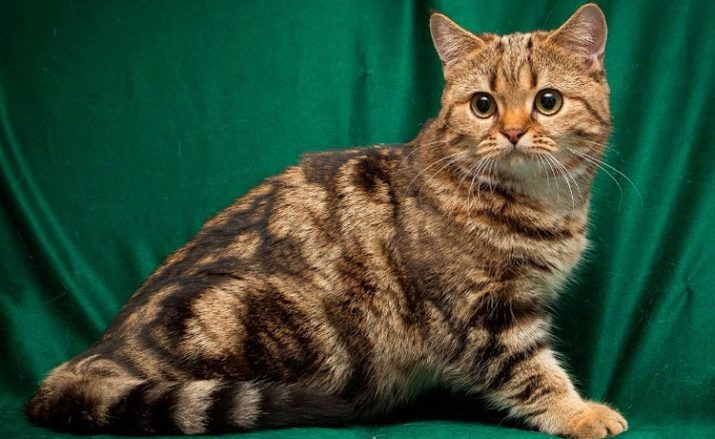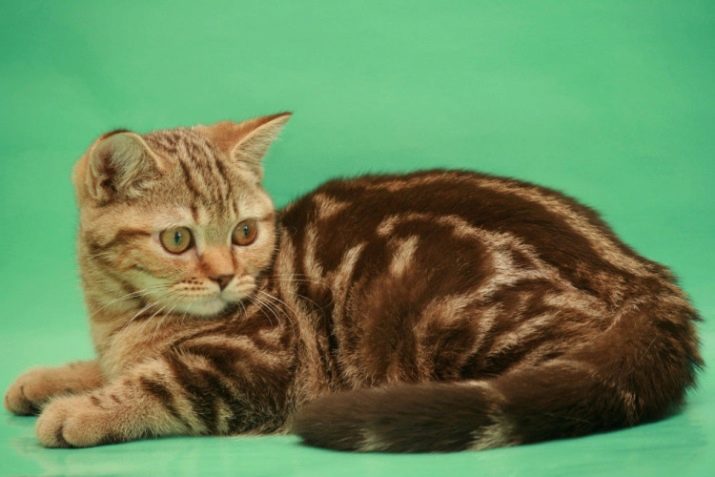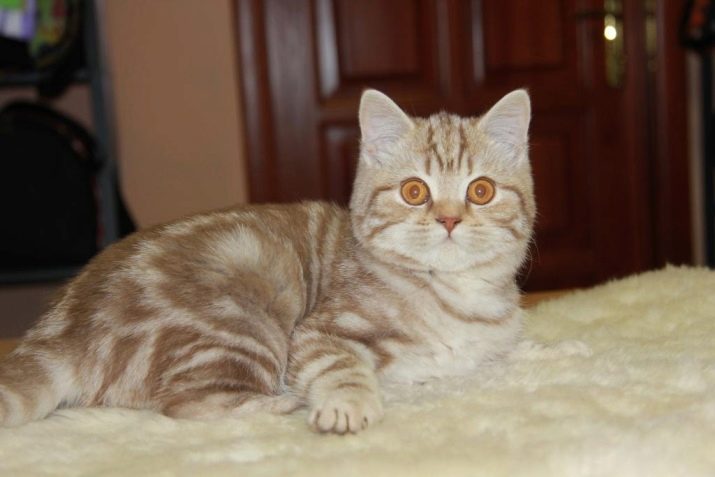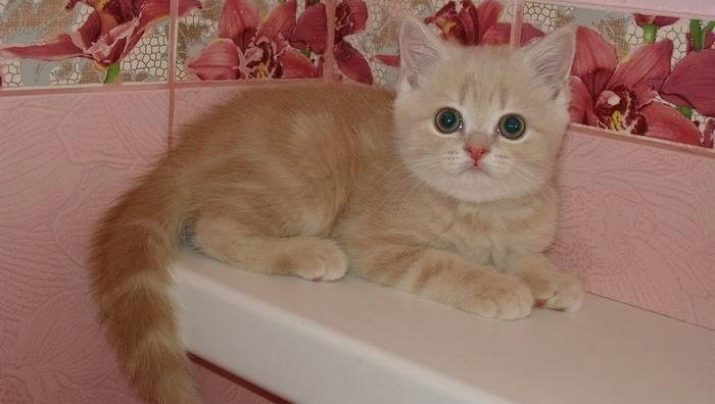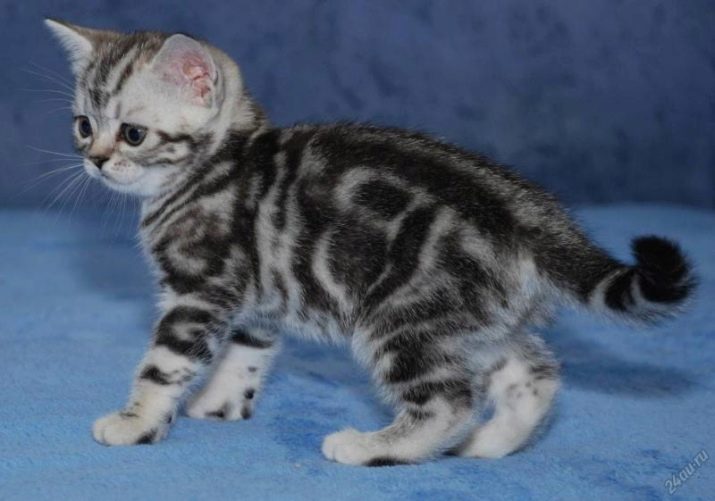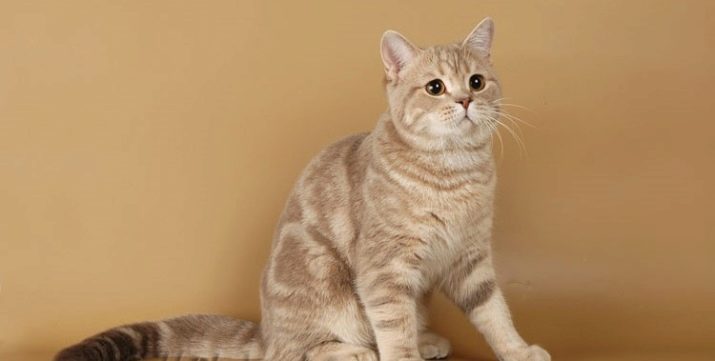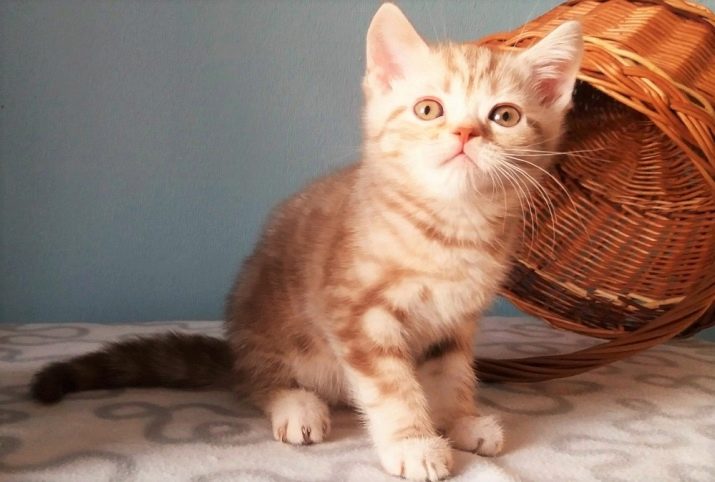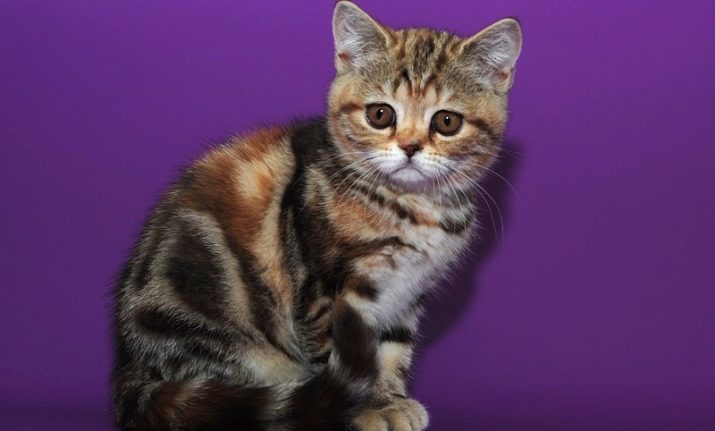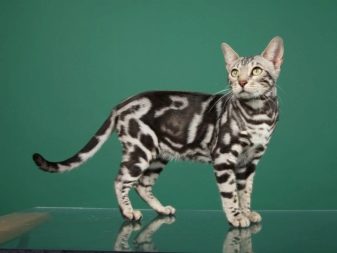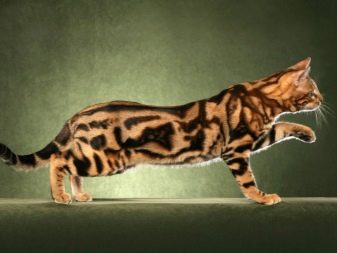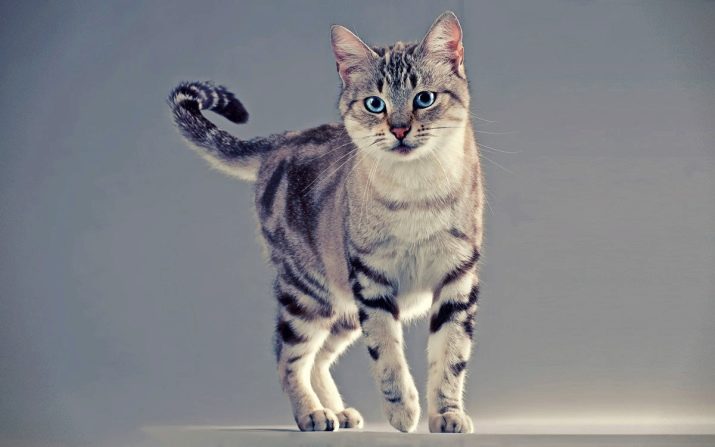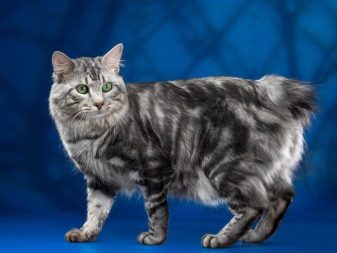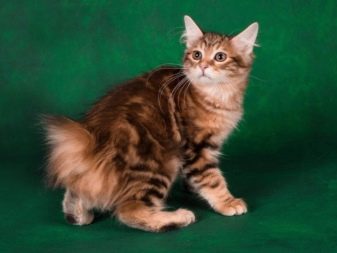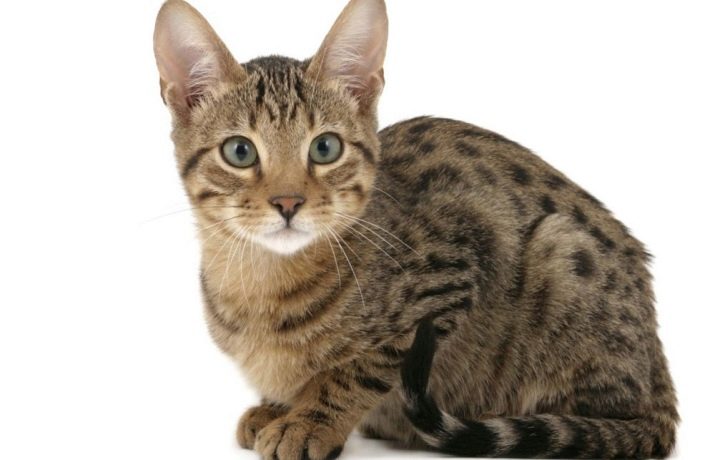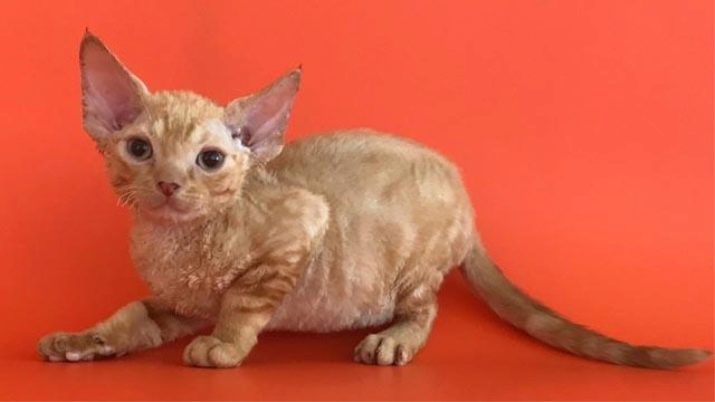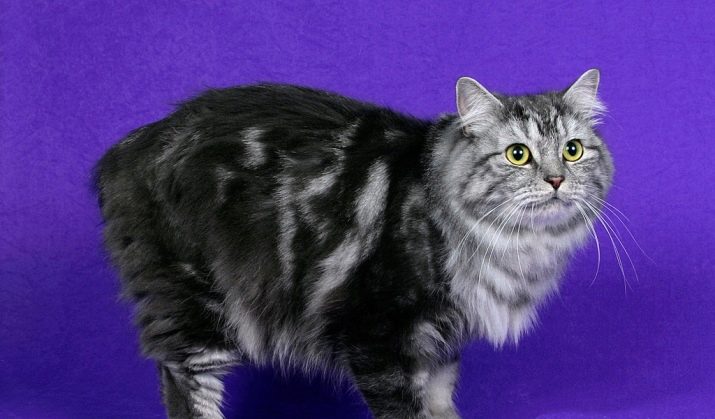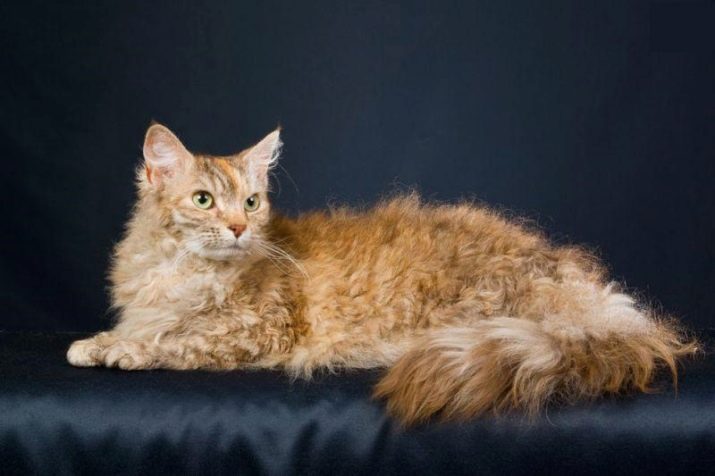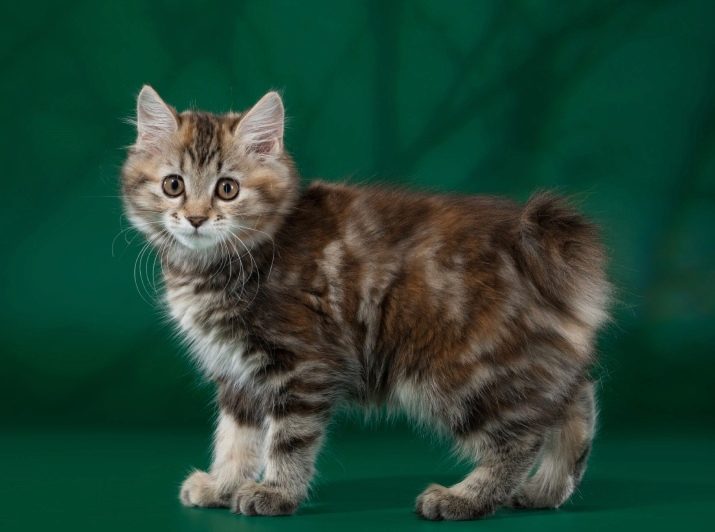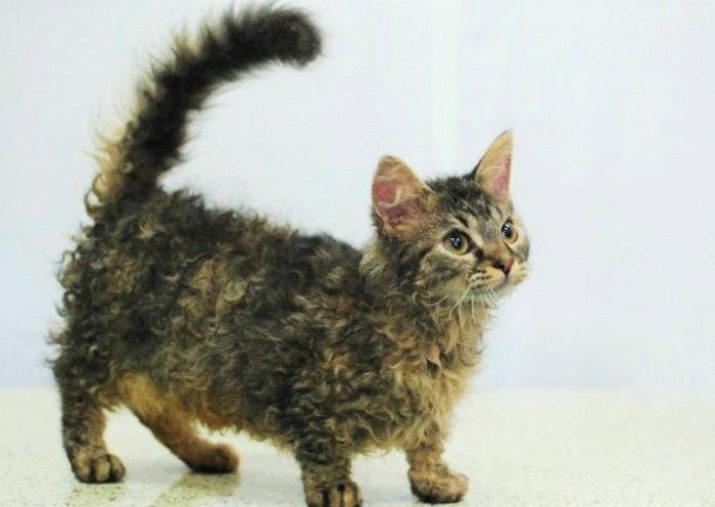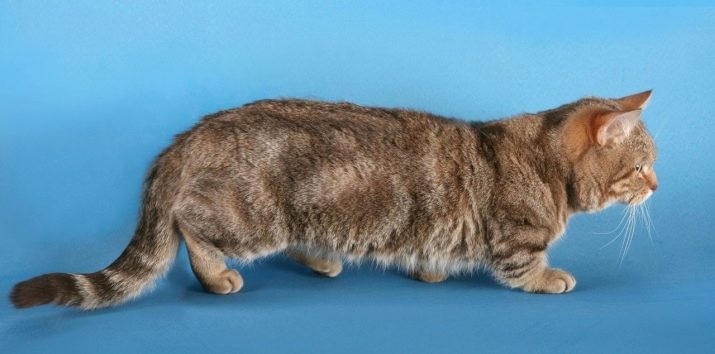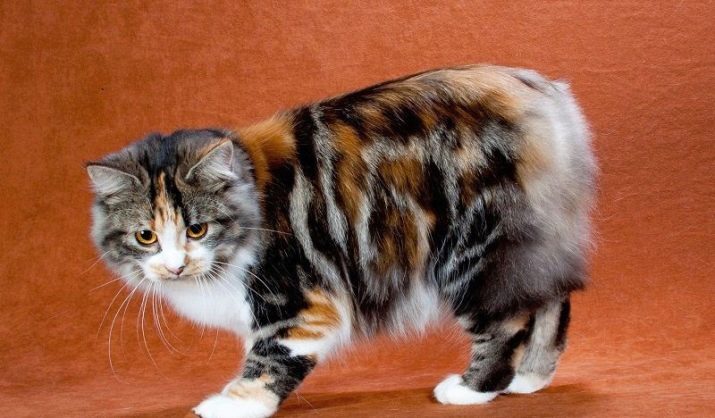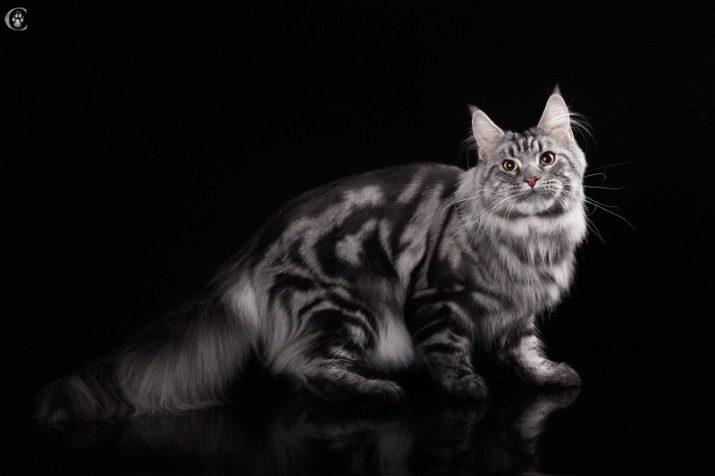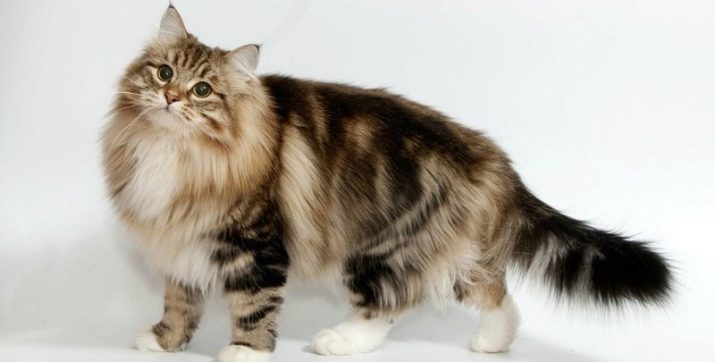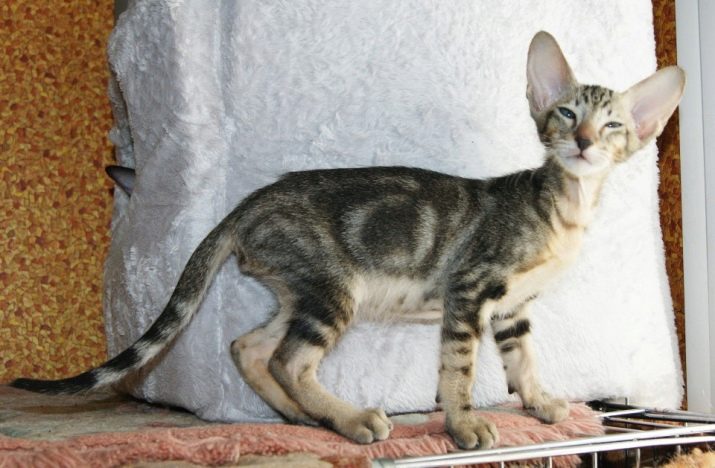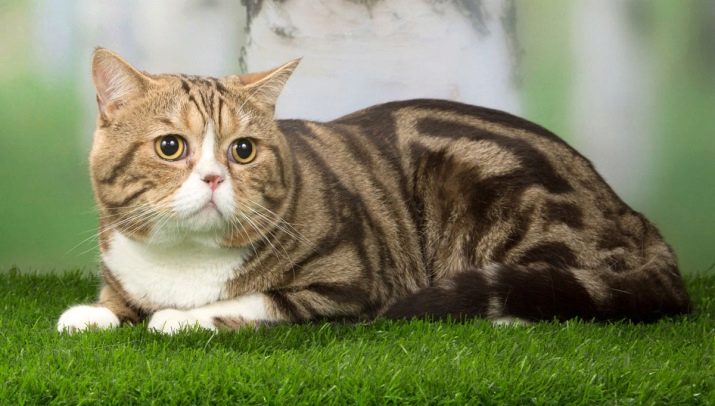Marble color of cat hair is considered one of the most attractive. It is characteristic of animals of different breeds. Most often, baleen representatives of Bengali, British and Scottish Fold breeds are born of marble.
The beauty of these pets, no doubt, makes them incredibly popular. You can fall in love with them at first sight. Today we will analyze what characteristics marble cats of different breeds possess.
Color features
In some cases, the beautiful marble color of cat hair is called classic. This color is one of the varieties of the famous tabby color.
It is worth making a small digression to find out what the term “tabby” means in defining the colors of animals. So, if the cat has an interesting color with specks or stripes, then this means that she is the carrier of the T (tabby) gene. Similar colors are found only in cats and most often in its wild subspecies.
All types of tabby-colors have common external features. These include the presence of thin stripes on the facewhich, like clear and contrast contours, outline the upper and lower eyelids. As a result, a noticeable letter "M" appears on the cats forehead.
Scientists say that this unique print on the skin was found in the very first species of cats, which is why it is often called wild.
If cat fur stand out peculiar noticeable divorces (that is, large concentric or spiral circles are seen on the sides), and along the ridge line 3 parallelly spaced strips stretch, there are rings on the feet, and spots on the abdomen, such a catchy color is called marble or classic tabby.
Cats whose wool has a similar color look very interesting. From the side it seems as if someone took a brush and painted on a neutral background clear contrasting stripes, making the animal look truly beautiful and a little wild.
Kinds
Do not think that the marble color is a single variant of the color of cat hair. There are several varieties of it, each of which is distinguished by its shades and patterns.
- Black marble - color is characterized by coal color stripes located on a dark brown background. The eyes and contours of the nose of a cat's nose with this color of wool are always clearly delineated. Animals with this color usually have yellow, brown or orange eyes.
- Chocolate - this kind of marble coloring is one of the most charming. It differs in dark chocolate patterns on a light background. The stroke on this color is always thick brown. In cats with this color, the iris is the same as in the previous case. The paw pads and nose of such animals have a characteristic brick shade.
- Cinnamon - Another unusual version of marble color. The background here is light honey, and the patterns on wool, paw pads, eye and nose strokes are tinged with cinnamon. Most often, the fluffy carriers of this luxurious iris have a yellowish tint.
- Red - red marble looks very brightly and elegantly on cat hair. This expressive color is characterized by a rich red pattern on a red background. The outline of the paws and pads is also bright red, but the eyes of the lucky owners of this elegant color can have different shades - yellow or orange.
- Cream - delicate and original color of wool, which occurs not too often. From the side it is a bit similar to the red marble, but differs in less catchy and rich tones. All colors here will be more subdued and calm.
- Blue - the main background with this type of marble color will be close to beige shades. The print on the wool and the stroke on the cat's face in this case are blue or gray. The eyes of such cats and kittens will be brown or bright yellow. Paw pads often have a dark pink color.
- Purple - Another truly amazing feline color. When it against the background of the patterns as the basis serves a silvery shade, and the drawings themselves and the stroke of the nose are lavender. The paw pads of these fluffies are pale pink, and the eyes are yellow or brown.
- Faun - this color provides a pale yellow background, on which there are characteristic divorces of the faun color. Stroke lines on the face and paws are pink, and the eyes have rich copper, brown or orange color shades.
Tortoiseshell - This marble looks especially interesting and unusual, as it combines two colors in the background. For example, bright and expressive look seals, whose tortoise color combines lavender and peach, chocolate and red or honey and red shades.
Breeds
Beautiful marble color can be in a variety of cats and cats domestic breeds. However, there are some individuals who have a similar skin color is more common. We will get to know them more closely and consider which color variant is typical for them.
Bengal
Bengal marble cats look very unusual and peculiar. In the hybrid representatives of this famous breed, colors such as gold, silver, snow, and coal are most often traced in color.
The pattern of these individuals is always tabby. For this reason, their marble is differently called "on silver", "on gold", coal or snow.
The version of the pattern on Bengal may differ. Marble from such handsome men can be of the “cloak” or “sparble” type. In the case of a coat color, the pattern will be less noticeable and expressive. When it is dark stripes almost buried in a general color background.
As for the sparbles, they are very highly valued. In their color can be combined contrast two-color sockets of large sizes, as well as large circles on the sides.
British
Gentle and elegant marble can often be found in the colors of a British or Scottish cat. These species differ from each other only in the structure of the ears. The Scots aristocrats are bent forward and pointing down.
This is one of the oldest European breeds. Its representatives are distinguished by a lazy and wayward character. They need a good upbringing. If everything is done correctly, beautiful furry friends will grow out of such handsome men.
Marble coloring at these cats can be usual or tortoise. Representatives of these breeds often have difficulty transferring a similar color to their offspring.
Asian tabby
The name of the breed here speaks for itself - I mean expressive color on the Bengali type. Cats with this color are quite common. The described individuals are highly active. Such animals love to play a lot and behave hooliganism. Cats very quickly get used to and become attached to their owner, while treating distrustful strangers.
American Bobtail
Cats of this breed can also boast a large variety of colors. Marble coloring can occur in various variations.
Lush beautiful Americans are very smart and clever. They love to talk and always demonstrate their contact character. In addition, these pets are independent. They can be excellent companions for all households.
Bramble
This breed is the youngest since it was bred in 2000.It received its name thanks to the creator - Harry Bramblet. These beautiful cats of intricate marble color were obtained in the course of the crossing of Bengal and Pieterbold with Brush color. For this reason, specimens have a Bengal color pattern, and the wool at the same time looks like a hard wire, while remaining soft and soft to the touch.
Until now, this variety is considered experimental and is very rare.
Devon Rex
These unusual animals are also marble. It should be noted that this breed was the result of a random mutation. Along with all the other curly cats, the Devon Rex resembles a cross between a dog, a cat and a monkey. Such cats differ in cheerful character, are very energetic and active. The irrepressible energy in them is combined with loving, sharp mind and gullibility.
Of course, this is not all breeds whose representatives can have a gorgeous marble color. These also include the following types:
- Cymric;
- laperm;
- Japanese, Kuril and Karelian Bobtails;
- lemkin;
- charming munchkin with short legs;
- manx;
- large maine coon;
- Norwegian Longhair;
- Oriental breed and many others.
Possible problems
Breeders who specialize in breeding attractive marble kittens of the British, Scottish, Bengal and other breeds, very often face all sorts of problems, due to which they may end up with a color that does not completely meet all existing standards.
Most often, breeders face such problems.
- Expressiveness. With such a problem between the print and the background on the cat's skin can be traced too bright contrast.
- Featheriness. If there is such a flaw, the color of the animal will look discolored, as if the marble is very worn out.
- Excess width of patterns. In this case, through the drawings on the background wool is almost invisible - this color is not considered the norm.
- Excess ticking. This ailment is outwardly manifested by a strong blurring of the picture, which should still be more noticeable and expressive.
- The so-called ragged pattern. With this problem, the stripes on the animal's skin can look torn or even turn into specks of different sizes.
It should be noted that the original marble color can belong not only to pedigree individuals. Similar colors are peculiar to yard baleen.
On the Bengal cat of marble color, see the video below.


